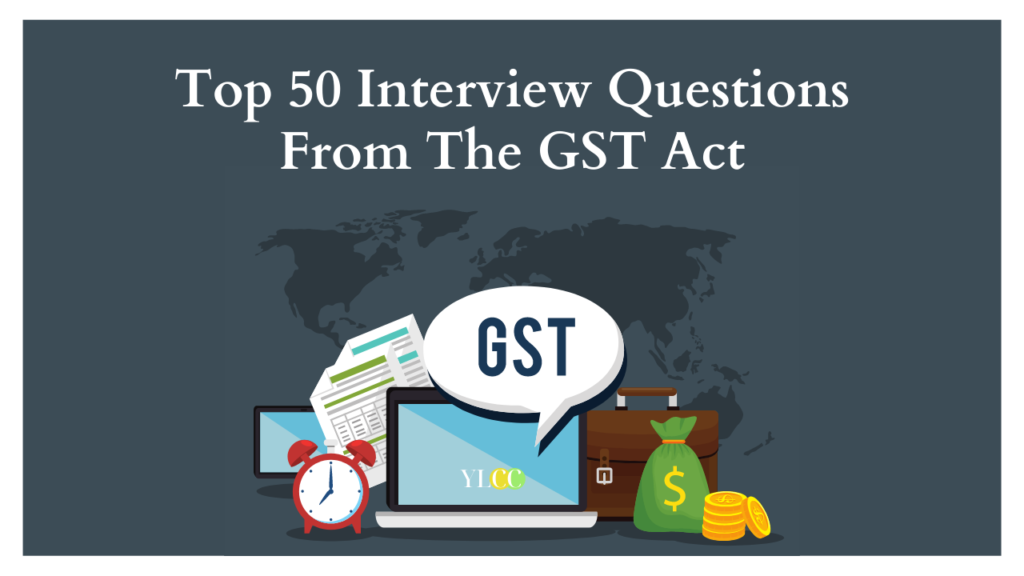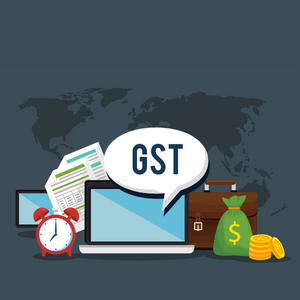
GST is known as the Goods and Services Tax. It is an indirect tax which has replaced many indirect taxes in India such as the excise duty, VAT, services tax, etc. The Goods and Service Tax Act was passed in the Parliament on 29th March 2017 and came into effect on 1st July 2017. The Act provides for 4 types of GST namely-
- Integrated Goods and Services Tax (IGST)
- State Goods and Services Tax (SGST)
- Central Goods and Services Tax (CGST)
- Union Territory Goods and Services Tax (UTGST)
In this article, Team YLCC brings you The Top 50 Interview Questions on the GST Act. Read on!
- When was this Act enacted by the parliament?
- State the year of the Republic of India when parliament enacted this Act?
- Does this Act apply to Jammu and Kashmir?
- What are actionable claims mentioned under Section three of the transfer of property Act of 1882?
- What is meant by the phrase address on record?
- What does adjudicating authority mean?
- What is the meaning of the word agent?
- How is the del credere agent different from mercantile agent?
- What does the word aggregate turnover mean?
- Who are agriculturalists according to this Act?
- Who is defined as an authorized representative under this Act?
- What does the word “cess” mean?
- What is defined as input tax?
- How has the appointment of officers been made under this Act?
- What are the powers of an officer under the dogs?
- How is the authorization of officers of state tax or of union territory tax being made?
- What does chapter 3 of this Act talk about?
- What does the expression supply mean?
- What is the composition levy?
- How is the composition levy calculated?
- What is the power of granting exemption?
- What is the time of supply of goods as mentioned under Section 12?
- How has the change in rate of tax been made in respect to the supply of goods or services?
- What are the eligibility and conditions for taking input tax credit?
- What does apportionment of credit mean?
- how credit could be availed in special circumstances?
- What are capital goods?
- How credit is distributed by the input service distributor?
- state the manner of recovery of credit distributed in excess?
- Who is the person liable for registration?
- Who are the persons who are not liable for registration?
- What is meant by compulsory registration under Section 24?
- What is the procedure for registration?
- what is deemed to be registration?
- How does cancellation of registration take place?
- how revocation of cancellation of registration occurs under Section 30?
- What are tax invoices and how is it different from digital receipt?
Read Our Article On ‘Top 50 Interview Questions On The Indian Partnership Act’ HERE.
- What are credit and debit notes?
- What is meant by the word accounts under Section 35 of this Act?
- What is the period of retention of any account?
- What are outward supplies and how is it different from inward supplies?
- What is the furnishing of returns?
- How matching reversal and reclaim of reduction in output tax liability is being made?
- What is the annual return?
- How is the annual return different from the final return?
- Who are goods and service tax practitioners?
- How is the order of utilization of input tax credit being made?
- How is the interest on delayed payment of tax calculated?
- How does transfer of certain amounts take place under this Act?
- When does the refund of tax take place?
YLCC would like to Anurag Mondal for his valuable insights in this article.







